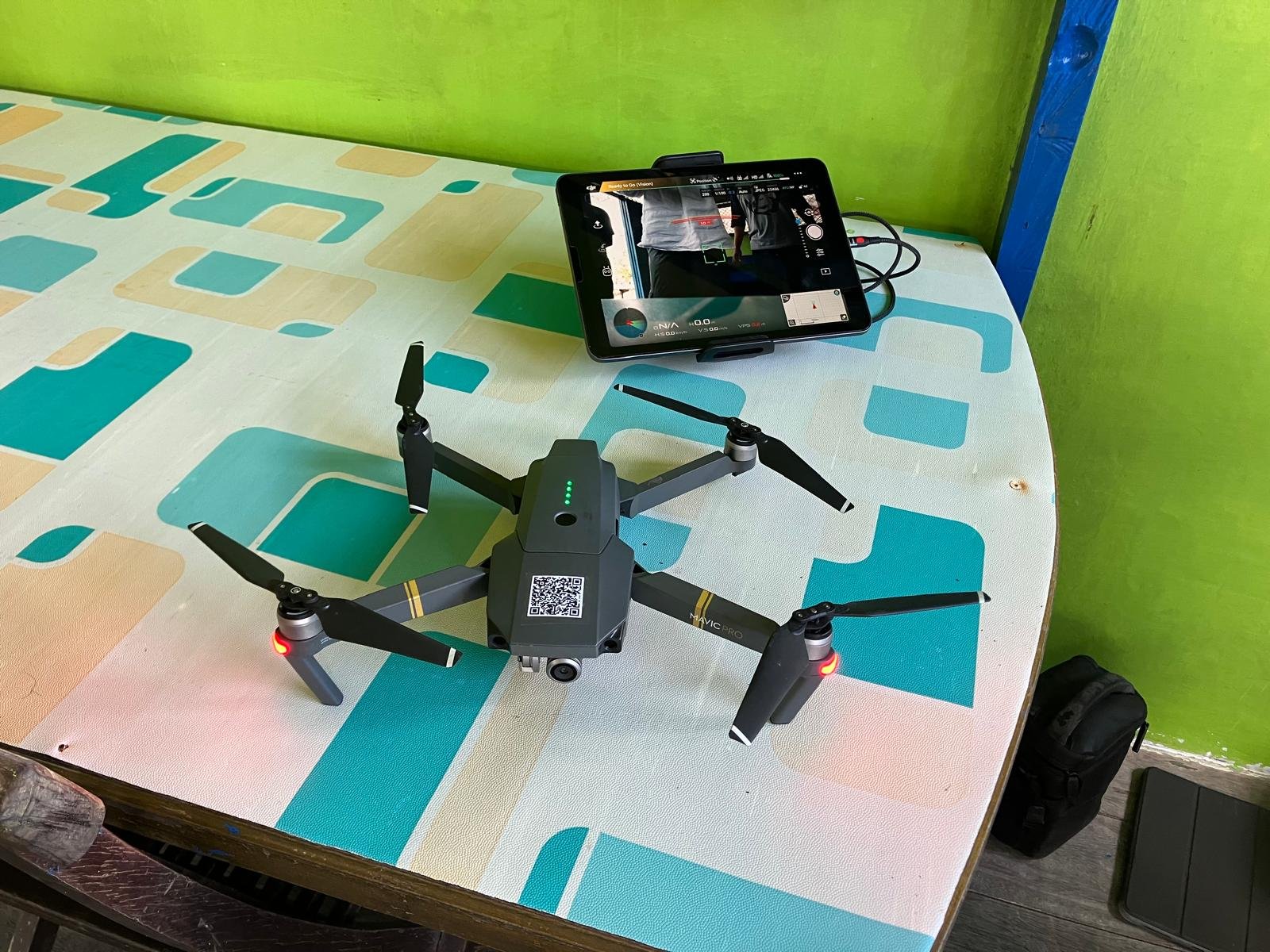The use of drones has been on the rise for several years – and they have been enhancing the field of conservation. With technological advancements, drones have become central to our habitat protection work in Indonesian Borneo.
Habitat protection
Orangutan Foundation actively helps to protect over 500,000 acres of tropical forest in Tanjung Puting National Park and Lamandau Wildlife Reserve – the equivalent of 82,500 tennis courts. Both are a stronghold for the critically endangered orangutan and support a range of other species. Protecting these habitats from illegal encroachment is critical to our conservation work.
Drone image of a guard post in Lamandau Wildlife Reserve
As part of our Habitat Protection programme, we man twelve guard posts 24-hours a day, located at vulnerable access points to the protected areas. Regular monitoring is conducted by boat and foot where possible – though the swampy terrain of the forest in some parts restricts accessibility.
DRONES
Orangutan Foundation drone
With increasing human expansion and shrinking forest remaining a risk, it is critical that we use all the resources available to augment our protection efforts. This is where drones come in, offering unprecedented perspectives and mechanisms for habitat surveying.
Drones allow us to see areas of the Reserve that cannot be reached by boat or by foot. They offer an aerial view of land use, showing encroachment and illegal activities. They also give photographic evidence and GPS locations. This data provides information on how best to carry out our protection activities.
Drone survey showing an oil-palm plantation
Drones however have their obstacles. Nature has its say when it comes to their use; surveying in rainy and windy conditions is difficult and during the wet season, flights don’t always go to plan! Then there’s the unforeseen reaction of wildlife – our drone expert Iqbal recently had to terminate a survey following the drone being attacked by a resident black eagle defending its territory.
Preparing to fly a drone
In order to use drones where we work, we have to register with the Air Force and the drone operators need a license. They have become an essential tool in conservation – we would miss not having our drones, with their widespread use beyond habitat protection and the valuable footage they provide.






